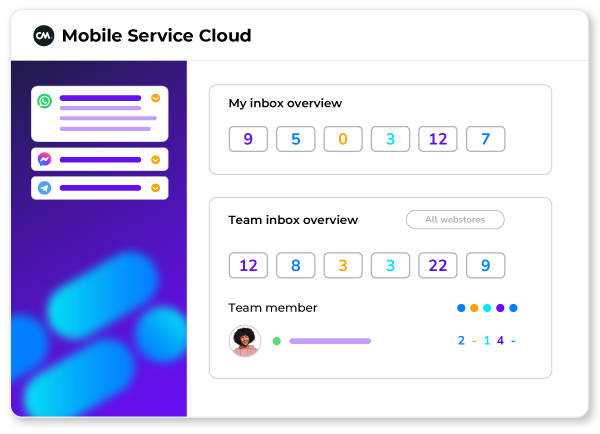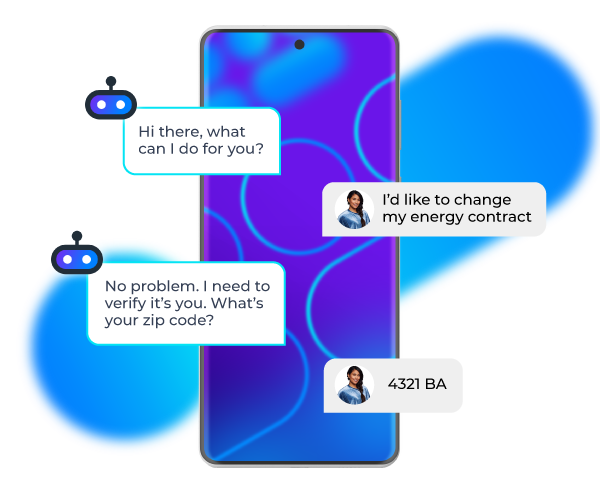- #1 Empower your team to offer consistent and quick service
- #2 Use Chatbots to offer exhaustive self-service options
- #3 Delight customers with proactive support
- #4 Reduce Customer Response Time by adopting an omnichannel communication strategy.
- The Takeaway
The eCommerce market is growing at an unprecedented rate. However, with so many platforms popping up every day, staying ahead of the competition is becoming more challenging.
So how do you keep up in such a rapid and competitive environment to improve your eCommerce business?
- By providing the best customer service.
We can’t emphasise enough the importance of customer service for your e-commerce brand. It’s the difference between satisfied shoppers who spend more and share the love or customers who are all riled up and ready to rip your reputation to shreds. Ultimately, the quality of your customer service affects your business’ bottom line, so you can’t afford to get it wrong.
Furthermore, the apparent factor of loyalty between a customer and a product influences a buyer’s choice of brand, but 96% of respondents in a survey regard the standard of customer service as a decisive matter.
Meanwhile, 72% of those questioned expected brands to have a complete set of information on each customer’s data, purchase history, and their level of overall satisfaction.
Customer service is more important than ever before, so brands that fail to excel in it are likely to get left behind by those who do. Improving the customer experience (CX) – a concept that involves everything from the level of service to how well the products fit into their lives is a huge focus for businesses in 2022. According to Harvard Business Review, an investment in CX can also reduce operational costs such as the cost to serve.
Unhappy customers are expensive, after all.
Learn how to improve your customer service and leverage it in your business.
#1 Empower your team to offer consistent and quick service
67% of consumers regularly use three or more channels to engage with a brand and expect a similar experience via every channel; support teams can’t afford to lose either time or context. If business conversations are scattered across different channels, it may be challenging to build a comprehensive record of all the support interactions with customers thus far. The biggest frustration of customers repeating themselves across channels and agents gets resolved when conversation and order history is captured and stored in one place.
For instance, with robust customer service platforms, you can give support agents the option to loop in and collaborate with different departments in your e-commerce business without losing the context of the customer’s problem. This will help them communicate across functions and present a feasible solution for your customers without making them go in circles.

Your business can view all conversations in one place, with a central inbox, and address issues with greater efficiency. Meanwhile, customers can obtain support via the convenience of their preferred channel.
This improves the productivity of customer support agents as one can quickly work together with colleagues, other teams, and external parties, such as suppliers or couriers, in one unified place to offer a seamless customer experience. You can leave comments, snooze conversations or even assign tasks to other colleagues. That’s how agents can be empowered to deliver an excellent customer service experience.
#2 Use Chatbots to offer exhaustive self-service options
Customers prefer human interactions to resolve a problem on any day. But not all queries and issues need a support agent’s assistance. Empowering customers to find solutions for commonly asked questions and known issues saves them from more extended waiting and resolution time.

Careful thought and execution are needed to succeed in self-service implementation. You don’t want to leave the customer confused and frustrated when they land at one of your self-service channels.
Make e-commerce chatbots an essential ingredient of your self-service strategy and route issues to agents with context when the bot can’t resolve the issue. Juniper Research reveals that e-commerce transactions via chatbots are expected to reach $112 billion by 2023, yielding cost savings of up to $11 billion.
With automated responses to customer queries via chatbot– or frequently-asked questions (FAQs), you can save time and let employees focus on other business-enhancing activities. For example, within intelligent customer service solutions, when at some point a chatbot cannot assist, it can then redirect to a customer support agent. Thereby helping to reduce the call volume and stress on the reps.
#3 Delight customers with proactive support
Anticipating and offering help to your online customers before they run into an issue leaves a lasting impression on them and could also reduce incoming support ticket volume. For example, you can learn why someone cancelled their order and looked for a workaround or extended additional payment option when you notice a payment declined error.

Proactive customer service is when you’re thinking a step ahead of your customers, and you can do this even when they browse through your e-commerce site. For example, say a customer is looking at your pricing page. If you’ve got the customer journey mapped out, you can configure a help widget that pops up on the web page with common queries and solution articles related to pricing and payments. Send proactive messages to invite website visitors to start a live chat or help them navigate while co-browsing. Or use WhatsApp’s message templates to send pre-written messages like appointment reminders, delivery updates, and confirmations.
#4 Reduce Customer Response Time by adopting an omnichannel communication strategy.
Companies often fail across digital channels because they are insufficiently aware of the real needs and preferences of their customers across omnichannel journeys. With an Omni-channel communication strategy, they can provide customers with the seamless sales and service experience they want as it unifies all messaging with potential customers across all channels.
Let's take the example of the e-commerce giant, Amazon, to understand the importance and impact of an omnichannel strategy. Despite being a digital leader, Amazon has designed an omnichannel customer-care strategy in which live agents still figure prominently to handle complex requests, demonstrate empathy, and resolve issues quickly. It has built self-service and e-care capabilities, but with a key difference. Amazon steers customers to the channels that are best suited to their preferences while also offering digital live interactions and company-initiated contact.
Further, an omnichannel approach involves collecting, centralising, and sharing data between different online platforms and sales channels. The effect of this practice is so significant that more than 75% of consumers now expect consistent interaction across all channels and platforms, whether in-person, phone-based, or via email, text/chat, or social media. Being accessible through a wide variety of platforms and channels enables businesses to reach potential customers where they already are.

Communication tools and an omnichannel strategy can provide your company with helpful data to make decisions to fit your customers' needs. Through this data analysis, you can better understand consumer behaviours and their preferred methods of communication. With the proper technology, the information can be used to establish outbound communications through multiple channels. These data insights allow companies to strategically allocate the necessary resources, including staff, to meet customer demand.
The Takeaway
When done right, customer service elevates the service experience for customers, who enjoy seamless, hassle-free, and speedier support. In turn, businesses benefit from improved customer satisfaction, which can incentivize repeat user engagement and purchases.
To practice the best customer service in your business, your customer service agents have to see themselves not simply as individuals but as a collective unit, striving to render the best customer service possible as a whole.
Mobile Service Cloud is an all-in-one customer service solution for customer service teams to maintain complete visibility of all support engagements in one place. Supporting a wide range of chat channels, it contains all the features that your team will need to deliver phenomenal customer service and keep customers loyal to and delighted with your business.
